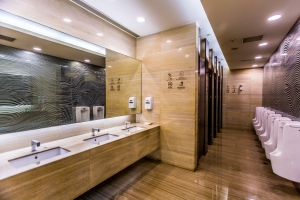Sustainability has become a key factor in interior design, especially in the heart of the home. As homeowners and designers prioritise eco-conscious choices, the environmental impact of a space becomes a crucial consideration. One surprising yet powerful player in sustainable design is the kitchen glass splashback.
Often celebrated for its sleek appearance and easy maintenance, the glass splashback also provides a host of environmental advantages. From its production and longevity to recyclability and contribution to healthier indoor air quality, glass delivers on both form and function sustainably.
In this blog, we’ll delve into the science behind the environmental benefits of glass splashbacks and explore how they contribute to a greener, cleaner kitchen.
1. Made from Natural, Abundant Materials
Glass is primarily made from silica sand, a naturally occurring and abundant resource. Combined with materials like soda ash and limestone, glass production relies on basic, earth-derived ingredients that are widely available and non-toxic. Unlike synthetic plastics or chemically treated woods, glass doesn’t require harmful chemical additives during manufacture.
This means glass splashbacks are free from substances like formaldehyde or volatile organic compounds (VOCs), which are commonly found in laminates or adhesives and can contribute to indoor air pollution. Choosing glass supports a healthier home environment while minimising the extraction and processing of non-renewable resources.
2. Long-Lasting and Durable – Reducing Waste
Glass splashbacks are long-lasting and durable, reducing waste. They can withstand heavy use and are resistant to scratches and stains, making them a practical choice for kitchens.
Glass splashbacks offer numerous sustainability benefits, particularly in terms of their longevity. Toughened safety glass, the material most commonly used for kitchen splashbacks, undergoes a controlled heat treatment that enhances its strength by up to five times that of standard float glass. This remarkable durability makes it resistant to heat, scratches, impacts, and daily wear and tear.
A well-installed glass splashback can last for decades without fading, cracking, or requiring replacement. This longevity not only ensures long-term value but also significantly reduces the need for frequent upgrades or repairs, a common issue with tiled surfaces that suffer from grout discolouration, cracking, and constant upkeep.
As a result, glass splashbacks contribute to a more sustainable kitchen lifecycle by reducing waste sent to landfills, minimising the use of resources for replacements, and promoting a closed-loop system.
Glass is one of the most recyclable materials available, with the potential for endless recycling without compromising quality or purity. If a glass splashback reaches the end of its life, it can be fully recycled and repurposed into new glass products or even incorporated into building materials like glasscrete or tiles.
Some manufacturers now offer splashbacks made from recycled glass, further reducing the carbon footprint associated with the extraction and processing of new raw materials. In a circular economy model, this closed-loop system is crucial in mitigating environmental impact and advancing towards zero-waste construction.
Additionally, glass splashbacks are often installed with minimal adhesives or fixings, making them easier to disassemble and reuse compared to permanently bonded surfaces like tiles or laminates.
Another underrated eco-friendly feature of glass splashbacks is their ease of maintenance. The smooth, non-porous surface prevents bacteria and grime from embedding, unlike grout between tiles, which can harbour mould and necessitate regular, chemical-heavy cleaning.
Glass splashbacks offer a range of benefits that make them a sustainable choice for kitchen design.
1. Cleaning and Maintenance: A simple wipe with warm water, vinegar, or a natural soap is often all that’s needed to restore shine and cleanliness to glass. This reduces the need for harsh detergents, bleaches, and sprays, many of which contain toxic chemicals that pollute waterways and contribute to indoor air pollution. By choosing glass, you can reduce your dependency on chemical cleaners, making it a cleaner option for both your family and the planet.
2. Energy Efficiency: Glass has high reflective properties, especially when finished with a polished or mirrored surface. In a kitchen, this means glass splashbacks can help amplify natural and artificial light, reducing the need for additional lighting. By brightening up a space and distributing light more effectively, you could potentially lower your energy consumption, especially in darker kitchens or those with minimal windows. Pairing glass splashbacks with LED task lighting is an energy-efficient design combo that ticks both aesthetic and sustainable boxes.
3. Timeless Design: Sustainability isn’t just about materials; it’s also about design choices that stand the test of time. Glass splashbacks offer a modern, minimalist aesthetic that’s unlikely to go out of fashion. This reduces the temptation to redecorate or rip out dated tiles with each passing trend. Whether you choose a bold colour, a digitally printed design, or a classic clear panel, glass is versatile enough to blend seamlessly with new appliances, cabinetry, or flooring. This means your kitchen can evolve without generating unnecessary waste.
In conclusion, incorporating sustainability into kitchen design doesn’t have to mean sacrificing style or functionality. Glass splashbacks are proof of that. With their durability, recyclability, low maintenance, and energy-efficient qualities, they represent a simple yet impactful way to make your kitchen more environmentally friendly. So, if you’re planning a kitchen renovation or building your dream home, don’t underestimate the green credentials of glass. By choosing a splashback that’s as smart as it is stylish, you’re not just upgrading your interior; you’re investing in a better future.






